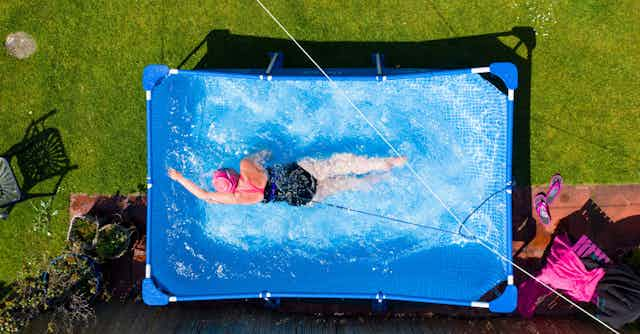Though it may have escaped the public’s attention at the time, the three months from late March to June 2020 were exceptionally challenging for water providers all across the UK. The sudden changes in personal routines that greeted the onset of lockdown influenced when people showered, cleaned and looked after their homes and gardens.
With offices, restaurants and other public places closed and everyone but essential workers told to stay at home, water companies struggled to balance supply with the unusual patterns of domestic demand.
It didn’t help that the period was also particularly sunny and dry. By the end of May, the daily peak in water consumption was 35% higher than before lockdown and came in the evening, whereas it previously peaked around 8am. About 2,000 homes in the Midlands suffered water shortages and several water companies had to ask clients to reduce how much water they used.
We charted this unique period by speaking with people living in England and Wales and tracking water use in data, news articles and scientific studies. While some of these changes may only be temporary, some in the water sector worry that demand patterns and increased home water use may become locked into everyday routines as more people opt to work from home.
Working from home
Throughout lockdown, people did most of their drinking, cooking, dish washing and toilet flushing at home. Those working from home slipped into more flexible domestic routines without the commute determining when they needed to rise and shower. This meant that water use didn’t spike first thing on weekday mornings as it normally would. The morning peak shifted from 9am to 10am, while more generally, water use was higher during lockdown on average.
Average hourly consumption before and during lockdown

Water use increased most during evenings, when homeworkers had more free time to invest in cooking and other activities without the commute. That meant people consuming more water washing fresh produce, boiling rice and pasta and cleaning dishes.
These thirsty lifestyle changes during lockdown were eventually tempered somewhat as people staying at home showered, washed their hair and did their laundry less often – and used less water and energy in the process. Compared to the workplace, working from home demanded fewer social expectations to be presentable.
Leisure and gardening
Cleanliness routines structured leisure time and relaxation in otherwise monotonous days. People who were no longer able to visit cinemas, pubs and restaurants replaced these treats with a relaxing bath or an invigorating shower. With the “one journey outside” policy, the people we spoke to were exercising more and taking extra showers to freshen up throughout the day.
Domestic gardens became important spaces for recreation and socialising too. Throughout the spring and early summer of 2020, sales of garden furniture, paddling pools and plant seeds rocketed.
The government’s Office for National Statistics reported that the amount of time people spent gardening doubled in March and April 2020 compared with the same period in 2015. Many people relied on hosepipes as water butts used for collecting rainwater ran dry.
Read more: We analysed electricity demand and found coronavirus has turned weekdays into weekends
Adapting to change
With the full return of students to school in September, patterns of water use returned to something resembling life pre-lockdown.
But the new habits that people picked up during lockdown will potentially linger for months and even years after the pandemic. Many people we spoke to as part of our study expected to continue working from home after government restrictions were lifted. Prior to the outbreak, 68% of British employees never worked from home. As the country prepares to emerge from its third national lockdown, the evidence suggests that more than 40% want to continue working from home for a few days a week.
Before the pandemic, the Environment Agency was warning that the UK is at risk of running short of water by 2050 due to climate change and population growth. Water companies are preparing with efficiency measures and long-term planning, but the large shifts in where water was consumed and how much during spring 2020 caught many of them by surprise.
Water helped preserve a semblance of normal life for many during lockdown, by helping people discover the relative freedom of their own gardens and in offering an escape from boredom and a chance to relax. For others, greater water use at home will have meant higher bills which some struggled to afford.
Lockdowns have shown how wider social trends influence water demand. Flexible working arrangements encouraged people to move their most water-intensive routines outside peak hours, but new routines made many people use more water in daily life. And if a new generation of gardeners emerges from the pandemic, there’s an opportunity to encourage water-wise gardening practices. Water butts which pool rainwater could help households cut their water demand in future by using hosepipes less often.

